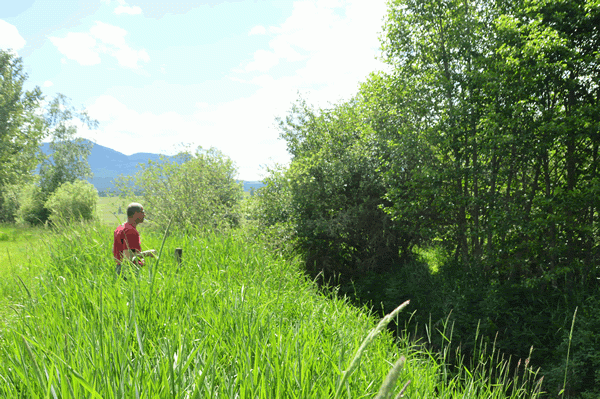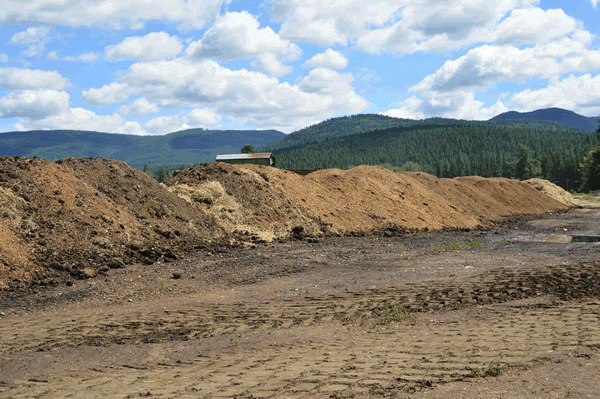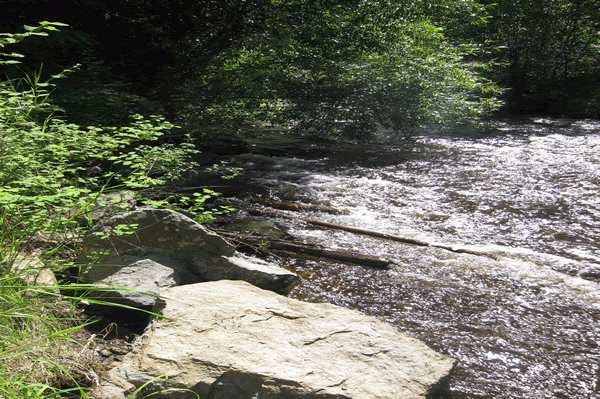Site Description
Name of the site: Vale Farm
Address: Okanagan | Lumby
Size: 1100 acres
Type of crops: hay, pasture, beef, lamb, pork, chicken, turkey
Number of people employed: 8
Owned property for: 12 years
Protecting the natural, abundant diversity of our farm land is very important to us. We are always looking to find the holistic balance between land, animals and people.
~Don Hladych
Stewardship Practices Guides
The following guides are relevant to this project site
- Riparian Areas in Settled Landscapes
- Guidance for Restoration Activities in Riparian Areas
- Drainage Maintenance in Agricultural Waterways
Click to download the table for stewardship practices at Vale Farm site.
Champion
Don Hladych is the owner / operator of Vale Farm.
Motivation
Don lists several motivations, most of them related to the desire to have a lower footprint related to his activities and the possibility of coexistence with wildlife.
Our goal is to promote strong and healthy families and to provide our community with a choice of nutritious quality farm products while cultivating the holistic balance between land, animals and people.
Comments about the problem with beavers on the Duteau Creek:
You know at the end of the day I’d love to find a way to coexist with wildlife. I don’t mind them being here and I think it is cool to have beavers and other sorts of wildlife around.
When commenting about the 5 acres area left aside for wildlife in the riparian zone of Duteau Creek Don says:
I could use it for grazing but I prefer to leave it alone. It is interesting to walk through there.
About the riparian area being restored and the shaded hay field next to Jones Creek one of Don’s objectives is the following:
Another objective of establishing this large and well-built riparian area, with lots of trees, lots of shade and lots of protection was to stimulate the deer to spawn in here and not out there in the field. When they leave the spawns out there we hit them with the mulch because it lays flats on the grass and doesn’t move.
Don also has a motivation to show people that sustainable farming can be as lucrative as conventional farming.
Don’t confuse organic with low productivity. People come here and they see all the equipment and the machines and they think I am not organic. I’d like to show people that you don’t need chemical fertilizer to grow productive crops. My productivity is not less than anybody else’s. I am trying to break the concept that certified organic is low productivity and not enough to feed the world.
With the Cedar Bridge private School on the farm, Don thinks this is also “another way of making a difference”.
This school teaches kids from grades 1 to 7 the values related to the land and the earth, by getting the kids out in the garden and in the forest.
Challenges
The main challenges pointed out by Don regarding the application of stewardship practices are of technical nature. He recognizes that time and effort is needed to do them, and that sometimes the usual farm activities are already too much. He also stresses the need for better follow-up and monitoring by those responsible for the projects, like the DFO and other institutions, especially when there are negative unintended consequences of the stewardship practices.
I am willing to do more projects like this in the future. But we are now starting to gain some long term knowledge about the impacts of these types of projects. I am very much aware that unpredicted consequences may happen. We never know about the unintended consequences of novel projects.
He pointed out that the funding is usually enough just for the implementation of projects, but is not planned for maintenance, monitoring and corrective actions of the projects.
Some of the interventions did work well and others didn’t in terms of follow up. They have funding for new projects but not for follow up to apply corrections to old projects.
Because of that, when a project like this I done in his farm has unpredicted negative consequences he is the one responsible for correcting them, because there is no further follow-up.
He gives the examples of the flooded areas by beaver dams in Duteau Creek and the predation on coho salmon by herons in the Smoke Pond that was created in an effort by DFO and BC Hydro. Regarding the area flooded by the beaver dam he says:
The beaver problem started where the creek was narrowed down and created perfect beaver habitat. Now beavers are chewing down the willows that were planted in the riparian areas.
The beaver created flooded areas in his hay field and also affected an upstream ditch that was filled with sediment that couldn’t go down the stream. Now he will have to rebuild the ditch. “I lost more land here than a lot of people farm.”
He pulled the beaver dam out twice last spring but they came back. This problem had to be solved with an excavator, by throwing the wood away from the creek bank. Regarding the Smoke Pond he says:
The Heron showed up after they put the fish in there and predated them all.
When asked about the possibility of donating the 5 acres area left aside for wildlife he says:
Donating land to Ecological Gifts program has passed my mind but I wouldn’t do it because there is still value in the land and I want to have autonomy to do what I want. I’d rather do myself what they would do in terms of land conservancy using funds from loans.
Outcomes
Most of the outcomes pointed out by Don are related to intrinsic values of nature. His main focus is on having a lower footprint in food production and having a holistic equilibrium in all his activities.
Our 2 creeks, Duteau Creek and Jones Creek, and their riparian areas provide a diverse aquatic and wildlife habitat. The absence of pesticides, herbicides and artificial fertilizer together with responsible grazing techniques, use of manure and compost promote the diversity of soil microorganisms and overall soil health. Grasslands need to be created and preserved. They serve as a carbon sink, improve air quality and add to the beauty of an area.
In the riparian area being restored and the shaded hay field next to Jones Creek, Don had better control over the usage of the hay field by deer spawns. This reduced the number of spawns that are hit by the mulch. Another important outcome that rises from Don’s comments is the knowledge gain in relation to the application of stewardship projects.
We are now starting to gain some long term knowledge about the impacts of these types of projects. I am very much aware that unpredicted consequences may happen. We never know about the unintended consequences of novel projects, but when I do something in my farm and I see unpredicted negative consequences I am then responsible for correcting them myself.
Stewardship Practices Menu
Learn more about Species at Risk
Stewardship Practices Case Studies
Fraser Valley & Lower Mainland Sites
Kootenay Sites
Okanagan Sites
Vancouver Island Sites
Contact Information
Find us on social media
LinkedIn: @StewardshipCentreBC YouTube: @stewardshipcentreforbc1047 Instagram: @StewardshipBC












